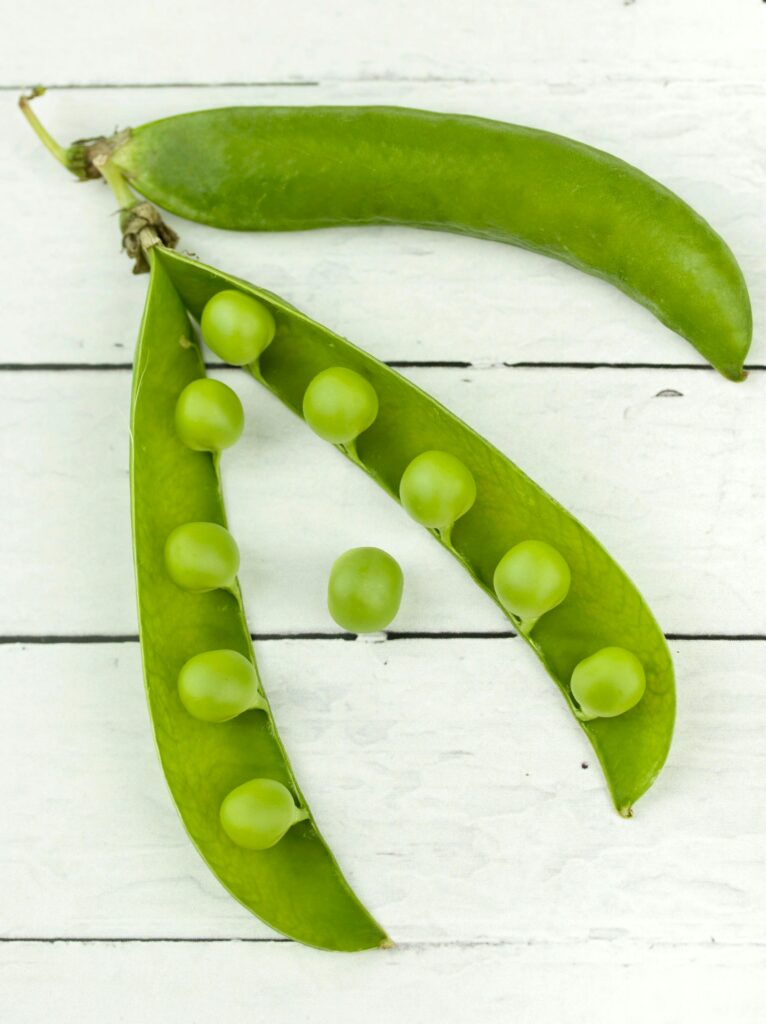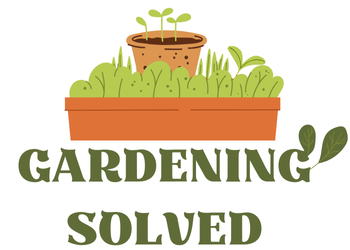Picture your pea plants are like old friends who’ve given their all during spring’s cool days. Once the weather warms up and their leaves start turning yellow, pods get tough, or powdery mildew shows up, it’s time to say goodbye. You’ll notice they stop producing much, and the vines just look tired. Whenever daily highs hit the mid-80s, most pea plants have done their job. Cutting them at soil level lets the roots stay behind, fortify your soil for what comes next.
Signs Your Pea Plants Are Ready for Removal
Once your pea plants start to slow down and look tired, it’s usually a sign they’re ready to be removed from the garden.
You could notice their leaves turning yellow initially, then brown as temperatures rise, and soon the whole plant just doesn’t have the same energy it once had.
Flower drop becomes common, and new pods stop forming, leaving you with mostly tough, stringy ones that aren’t tasty anymore.
Wilting tips, even with enough water, tell you the roots are struggling, and the vines might show brown spots or powdery mildew, especially in hot, humid weather.
Sometimes, pests like aphids appear, and diseases like Fusarium wilt make the problem worse.
Plants that are stressed, infected, or have stopped producing should be taken out so your garden stays healthy and ready for what’s next.
Optimal Timing for Pulling Up Pea Plants
You should start considering pulling up your pea plants once the weather regularly heats up into the high 80s or low 90s Fahrenheit, because peas naturally slow down and stop producing as temperatures rise.
From this point, you’ll often notice leaves turning brown, pods becoming tough and stringy, and plants looking tired or stressed.
Even with ideal care, most pea plants reach the end of their productive life about 50 to 70 days after sowing, or up to 12 weeks when spring stays cool and you harvest often.
Should you see signs like yellowing leaves, powdery mildew, or a big drop in pod quality, it’s a clear signal the season is over.
Pulling plants at the right time helps prevent disease spread and clears space for succession planting or shade crops that thrive in warmer weather.
Leaving the roots enriches your soil with nitrogen, giving your next crop a healthy head start.
Recognizing Disease and Pest Indicators
At the point pea plants show signs of disease or pest damage, it’s often a sign to contemplate removal.
You’ll notice powdery mildew appearing on leaves, which signals the fungal lifecycle is active and spreading.
Fusarium wilt and root rot cause yellowing, wilting, and stunted growth, indicating serious root trouble.
Insect identification matters here: aphids thrive in warm, dry conditions and can sap your vines, while pea moths and thrips attack flowers and pods, damaging yield.
These pests and diseases reduce plant vigor and pod quality, so removing affected plants helps protect your garden.
Promptly cutting diseased plants limits fungal spore spread and keeps pests from multiplying, preserving plant health and your harvest potential.
Staying alert to these signs helps you know exactly at what point to pull pea plants for the best garden result.
Harvest Duration and Plant Longevity
Peak pod production usually hits about 12 weeks after planting provided the weather stays cool, and you can keep harvesting as long as your vines look healthy and the pods keep forming.
Every time you pick your peas promptly and often, the plant puts more energy into growing new pods, so you squeeze the most out of your harvest by staying on top of it.
Once summer heats up and temperatures climb above 85°F, though, plants slow down, you may notice fewer peas, and pods can turn tough this is your cue that the season is ending and it’s time to start considering removal.

Peak Pod Production
Pea plants usually reach their best pod production between 50 and 70 days after you sow them, and provided the weather stays cool, you can harvest for up to about 12 weeks provided you keep picking often.
During peak yield, your plants are crowded with pods, and you’ll notice pod clustering—multiple pods growing close together—while the vines stay green and vigorous.
This is whenever your garden feels most rewarding, and frequent harvesting actually encourages your peas to set even more pods.
As long as temperatures stay mild, your plants will keep producing, but once things heat up, pod quality drops fast pods become stringy and tough, and leaves start to brown or yellow.
Eventually, the plant’s energy shifts from making new pods to maturing seeds, so your harvest window starts to close.
Enjoy the bounty provided you while it lasts, because this peak phase is whenever your care truly pays off.
Harvest Frequency Impact
You already know that pea plants can give you their best whenever the weather stays cool and you pick often, but now you might wonder how much your daily habits actually shape how long those vines keep producing. Should you harvest peas as soon as pods fill out, you trigger the plant to send energy into fresh flowers and pods instead of letting them dry or toughen up. Miss a harvest window, and pods become stringy, while the plant rushes to seed, calling time on its productive life.
Frequent picking keeps vines lush, and peas form new pods almost as fast as you pick them this is the best way to stretch your harvest window well into the season, provided the weather cooperates.
But your pick rate isn’t the only thing that matters. How you space your pod picking also impacts total yield. In the case you pick every other pod, you leave some behind to mature for seed, but the plant believes its work is done and slows down. Conversely, a consistent once-over every day or two prompts the plant to funnel its energy into the next round of flowers and pods, squeezing out a higher overall yield even if each pod is a little smaller. This dance between harvest intervals and pod spacing directly shapes your plant’s vigor and longevity.
| Harvest Style | Plant Response | Harvest Window |
|---|---|---|
| Pick often, all pods | Strong flowering, lush vines | 12 weeks, perhaps more |
| Skip a day, miss some | Slows pod set, seeds mature | Ends sooner |
| Random, uneven picking | Vines weaken, pods toughen | Harvest shrinks fast |
You notice this pattern most during your garden strolls. Whenever you pick with care and regular rhythm, the vines stay alive longer and fight off disease better, rewarding you with bowl after bowl of tender peas through the weeks when the season’s at its peak. The habits you build each morning ripple through the life of your vines, quite literally shaping the bounty on your table.
Temperature Effects on Longevity
Once temperatures start climbing into the high 80s and low 90s Fahrenheit, pea plants begin to struggle, signaling the winding down of their productive life. Peas have limited heat tolerance, so as temperatures rise, their growth slows, and pod production declines. The narrowing range between warm days and cooler nights—called diurnal fluctuations—also impacts their vigor. Whenever nights remain warm, pea plants lose recovery time, hastening decline.
Consider these effects on your pea plants as heat sets in:
- Reduced pod formation and slower vine growth occur due to heat stress.
- Leaves yellow or brown as photosynthesis weakens with warming.
- Plants become more vulnerable to diseases like powdery mildew.
- Yield drops sharply beyond 85°F due to impaired flowering.
- Extended cool nights help prolong harvest by giving peas a break from daily heat.
Being mindful of these factors will help you time plant removal for the best harvest and soil health.
Best Practices for Removing Pea Plants
You’ll know it’s time to pull up your pea plants once they start looking tired, their leaves turn brown, and the pods get tough and stringy.
Go ahead and cut them at the soil line, leaving the roots behind to feed your garden with good nitrogen. This way, you keep your soil happy and ready for the next crop, while stopping any pesky diseases from spreading around.
Timing for Removal
Warm seasons arrive, and so does the right moment to contemplate removing your pea plants, especially once the signs of strain become clear in the leaves and stems.
Pea plants usually stop producing as temperatures climb into the high 80s or low 90s°F, signaling that it’s prime climate timing for their removal.
Managing succession planting depends on this to keep your garden productive. Here’s what to look out for:
- Leaves turning yellow or brown and vines losing vigor
- Pods becoming tough, stringy, and less edible
- Powdery mildew or other diseases showing up on foliage
- Plants ceasing to produce new pods after 50–70 days
- Consistently warm weather pushing plants past peak harvest
Removing plants promptly once these symptoms appear protects your garden from pests, diseases, and prepares the soil for your next crop.
Removal and Soil Benefits
Although the temptation could be to pull your pea plants out entirely, it’s best to cut them at ground level instead. This leaves the roots behind, where they decompose and feed soil microbes. Those root residues fortify your garden with nitrogen, thanks to helpful bacteria that lived in the roots. This natural lift helps future crops grow strong.
Should your plants be healthy, compost the tops to recycle nutrients. But in case you spot disease, toss the tops to stop problems from spreading. Leaving roots in place also improves soil structure, making it easier for next season’s plants to thrive.
You’re not just cleaning up; you’re setting the stage for a richer, more colorful garden. Your soil will thank you, and so will your future harvests.
Soil Benefits After Pea Plant Removal
After you remove pea plants, leaving their roots in the soil does more than just avoid extra work; it actually benefits your soil’s health. Whenever pea roots stay underground, they decompose slowly and release nitrogen—a natural fertilizer that the next round of plants will love. This happens because peas form a partnership with Rhizobial bacteria, which pull nitrogen from the air and store it in nodules on the roots. Even after the main plant is gone, this stored nitrogen feeds your garden for weeks.
The breakdown of roots also improves soil structure, making it more crumbly and easier for new roots to grow through. Plus, healthy plant material left on top as mulch keeps the soil cool and moist, which is especially helpful whenever you plant cover crops or need to protect soil during hot spells. Meanwhile, all that decomposing plant matter enhances microbial activity, which helps your soil stay lively and fertile.
- Nitrogen enhancement: Pea roots release stored nitrogen into the soil, giving your next crops a head start.
- Soil structure: Decaying roots create air pockets, which help water and nutrients reach plant roots.
- Microbial activity: Rotting roots and plant matter invite helpful microbes, which keep the soil alive and productive.
- Cool, moist soil: Adding healthy pea vines as mulch helps maintain ideal soil temperatures and moisture for future plants.
- Cover crop support: Leaving roots and mulch in place prepares the soil for planting cover crops or other vegetables right away.
With these steps, you turn the end of your pea season into a strong beginning for your next garden success.
